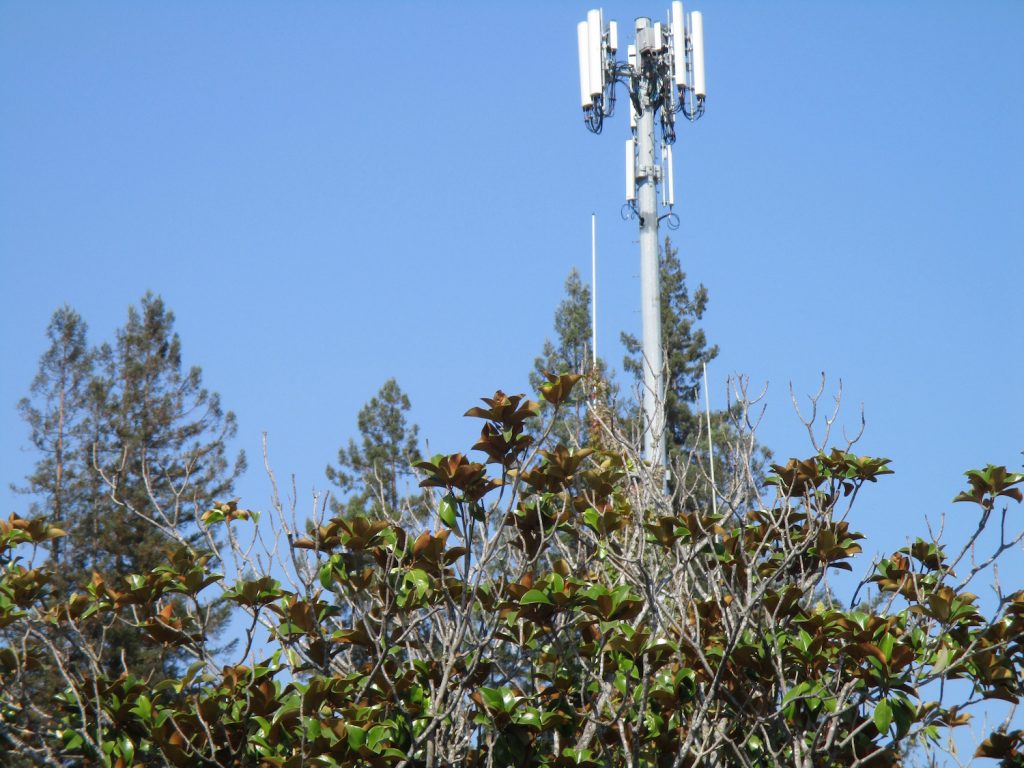July 15, 2017 update to this post is here: http://emfsafetynetwork.org/sb-649-is-a-shameless-gift-to-the-telecom-industry/
Would you want to have these all over your town, in your neighborhood, maybe even in front of your house?
 SB-649 is a current California Senate bill introduced by Senator Hueso. EMF Safety Network opposes this bill because it will fast track wireless radiation antenna deployments in our neighborhoods and communities, and thwart public participation.
SB-649 is a current California Senate bill introduced by Senator Hueso. EMF Safety Network opposes this bill because it will fast track wireless radiation antenna deployments in our neighborhoods and communities, and thwart public participation.
The League of California Cities opposes SB-649. They describe it stating, “This proposal unnecessarily and unconstitutionally strips local authority over public property and shuts out public input and local discretion by eliminating consideration of the aesthetic and environmental impacts of “small cells.”
How to oppose SB-649 “Wireless telecommunications facilities”
Please submit your comments by April 3rd!
1. Go to http://leginfo.legislature.ca.gov/faces/billNavClient.xhtml?bill_id=201720180SB649
2. Scroll down and click on “Comments to Author”
3. If you have not registered you will need to do so.
4. After you register click the circle “oppose” and send your comments (2000 characters) to the author by March 28. If you are representing a group please sign as such. Before you click submit, copy your comments into a separate email.
5. Send the same comments to your State Senator which you can find here: Type in your address and city. http://findyourrep.legislature.ca.gov/
EMF Safety Network and Ecological Options Network sent the following letter opposing SB-649.
Suggested comments: If you need help with what to say you can use any or all of these comments which are adapted in part from the California League of Cities form letter, and our letter.
Dear Senator Hueso,
I respectfully oppose SB-649. This proposal unnecessarily and unconstitutionally strips local authority over public property and shuts out public input and local discretion by eliminating consideration of the aesthetic and environmental impacts of “small cells.”
International scientists and doctors advise reducing wireless radiation exposure to protect public and environmental health.
Wireless disrupts cellular communication, damages immune and nervous systems, desynchronizes brain and heart rhythms, and causes headaches, sleep problems, tinnitus, anxiety and a host of other health problems.
5G millimeter wave technology is scientifically shown to affect humans, penetrating the skin and affecting biological systems
There is no substantial evidence to support SB649’s determination that the deployment fits the CEQA exemption. There is substantial evidence in support of a fair argument that the project may create environmental impacts.
The National Toxicology Program published a 25 million dollar study which is one of the largest and most comprehensive studies on cell phone radiation and cancer. In the study the rats exposed to cell phone radiation developed two types of cancers, glioma, a brain tumor, and schwannoma, a tumor in the heart.
This bill strips local government of the authority to protect the quality of life of their residents, and to protect public property and the public right-of-way from relatively unconstrained access by small cells.
Neither the CPUC, nor the Federal Communications Commission (FCC) can be relied on to serve the public interest because they are both regulatory captured agencies.
SB 649 goes too far by requiring local governments to approve “small cells” in all land use zones, including residential zones, through a ministerial permit, thereby shutting the public out of decisions that could affect the aesthetics of their community and the quality of their environment.
Thank you!
[your name]

